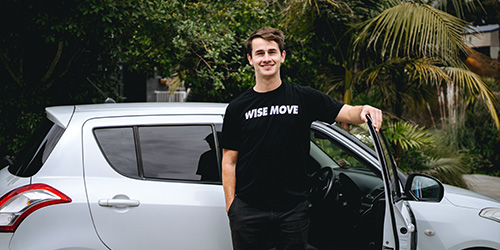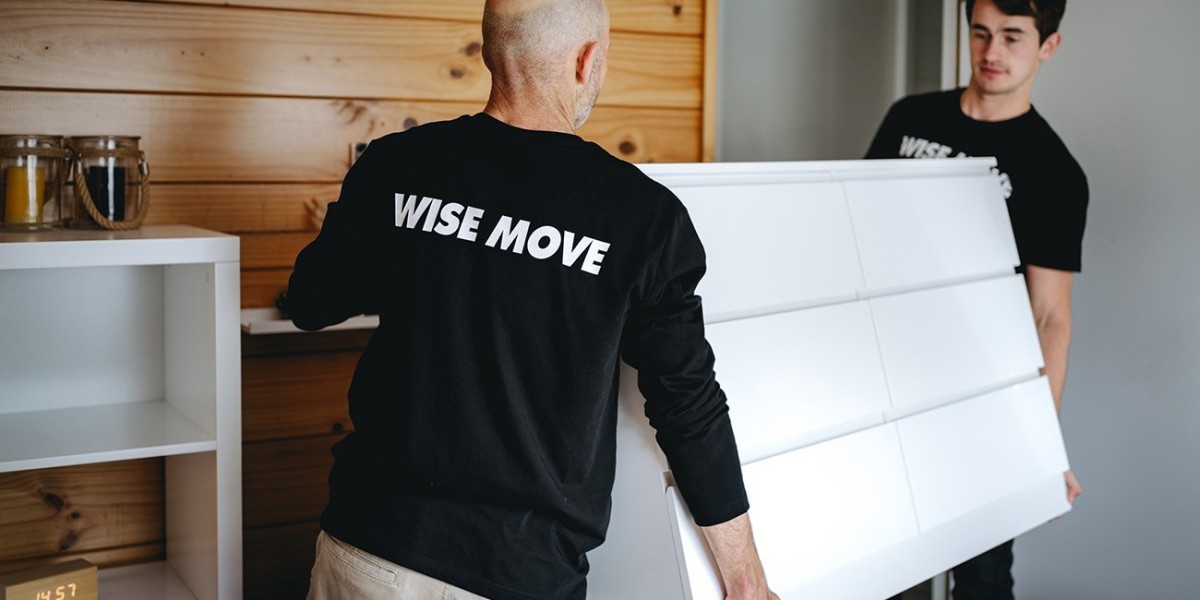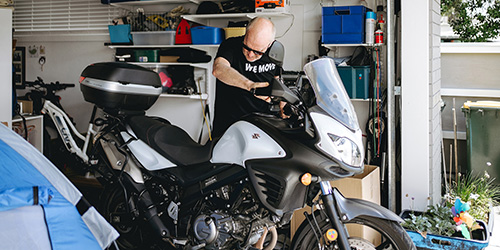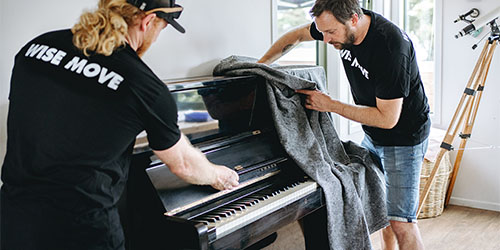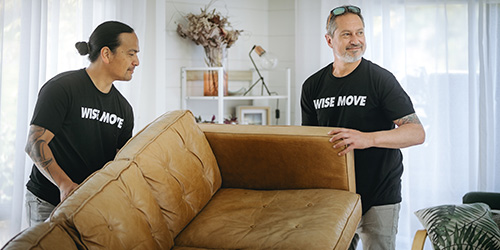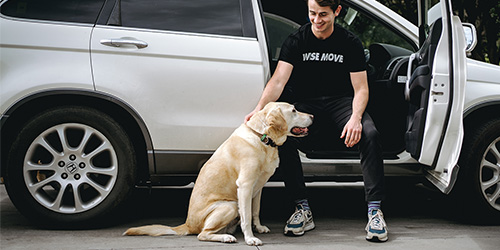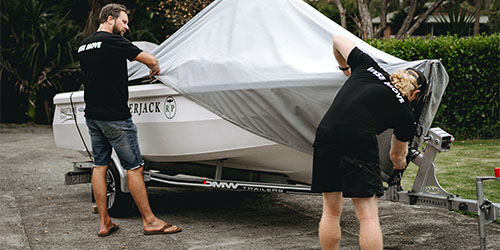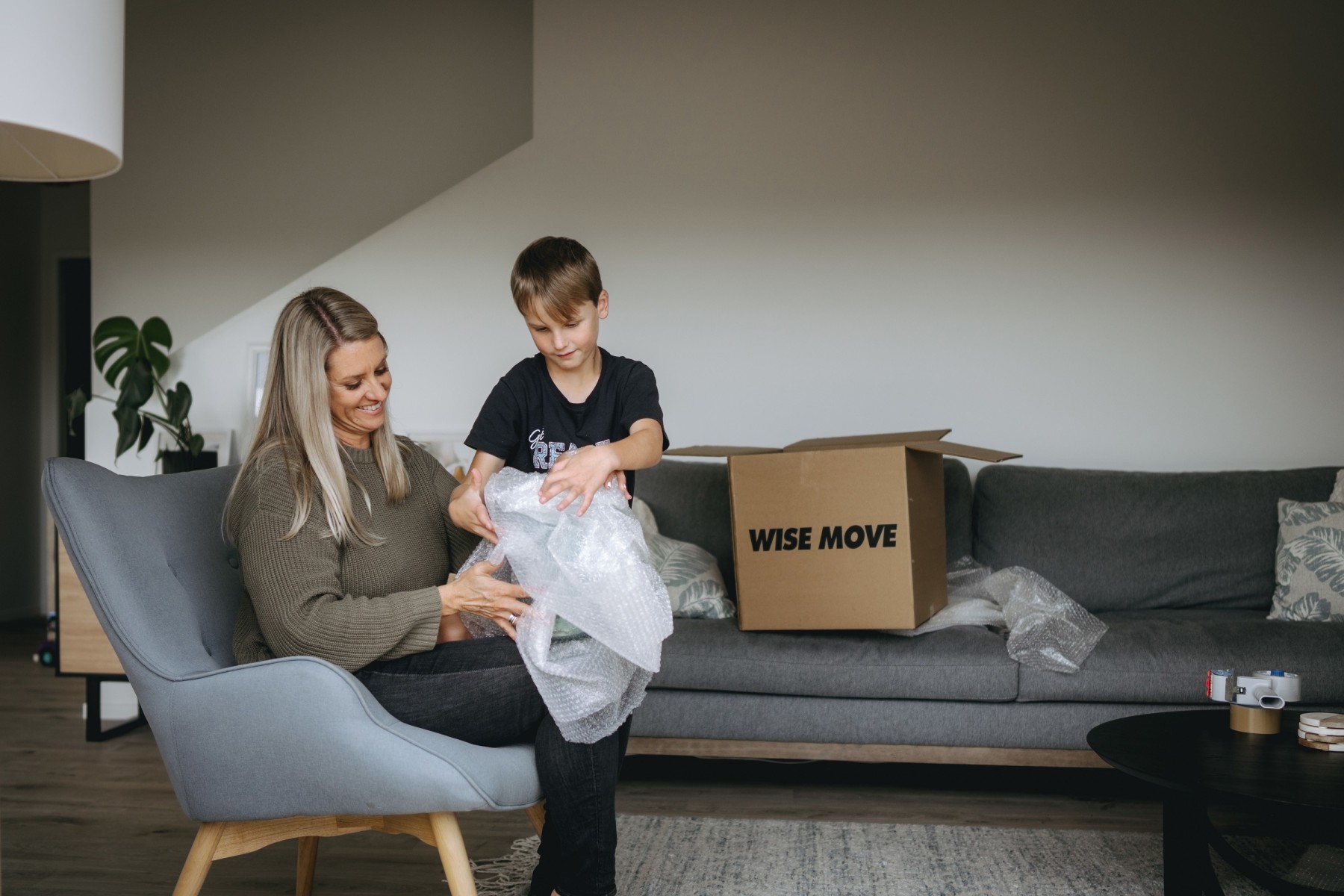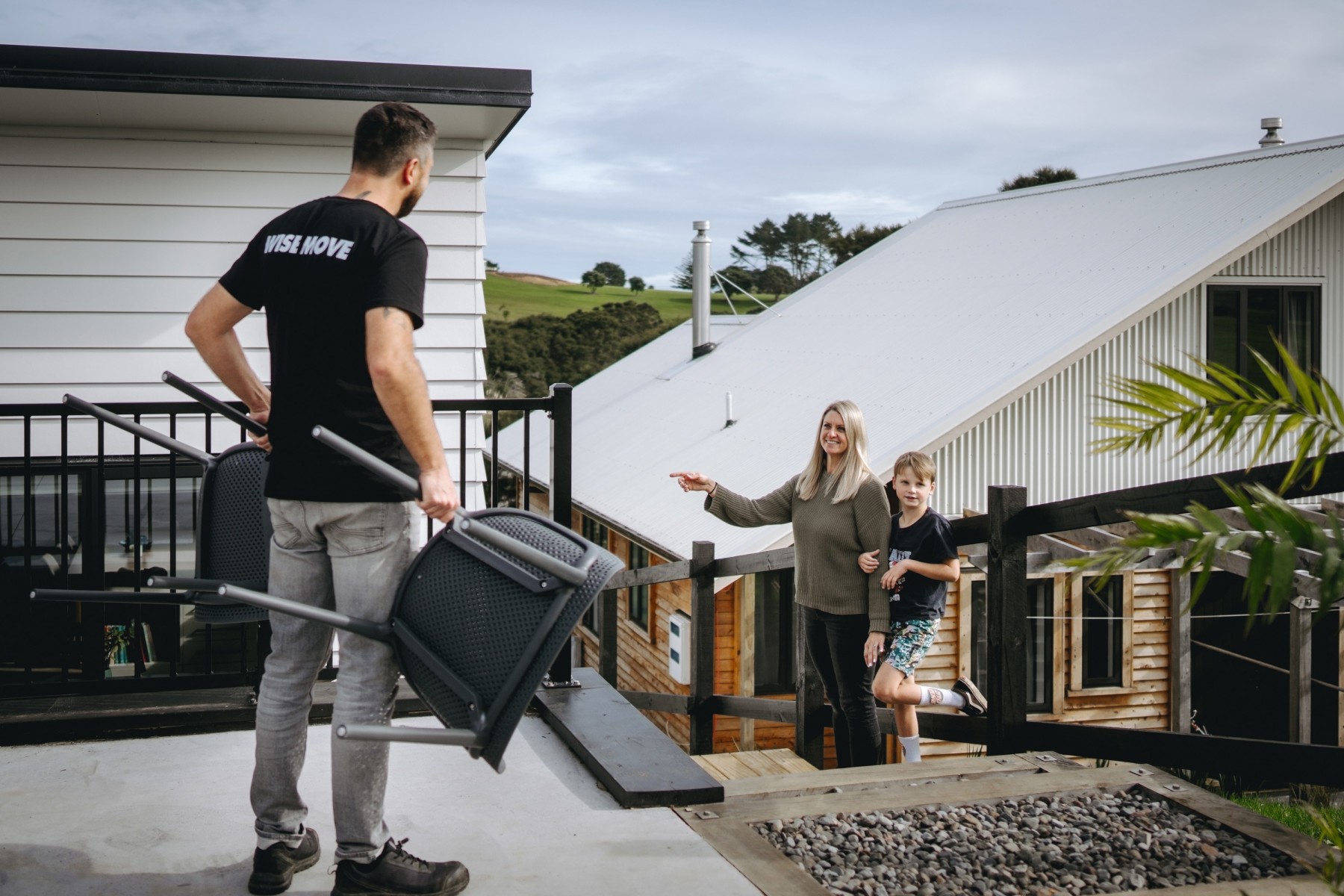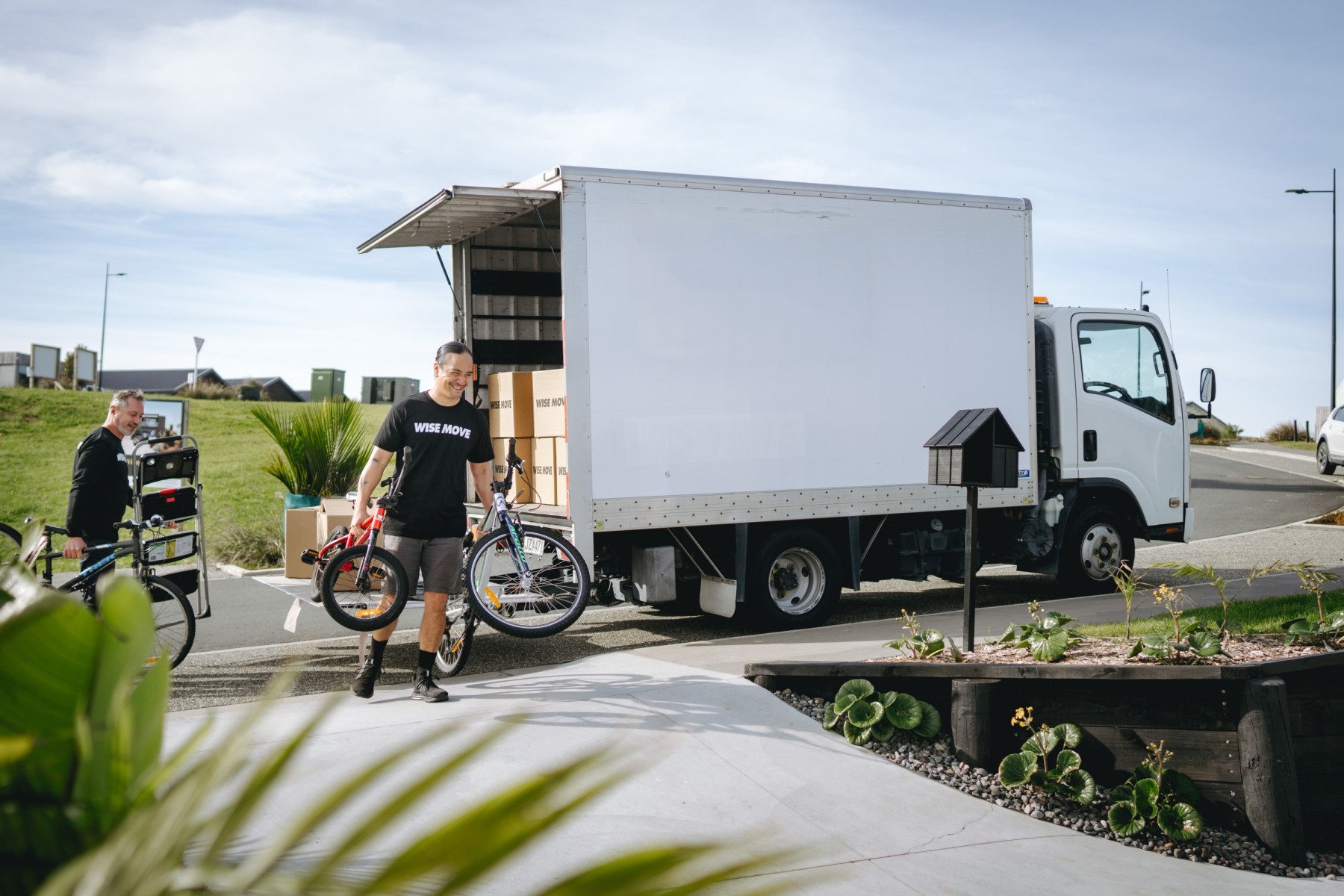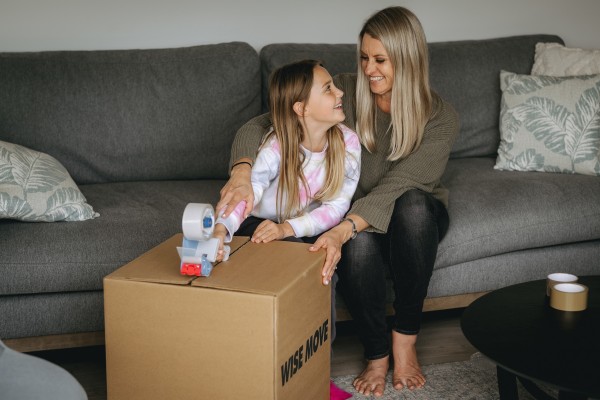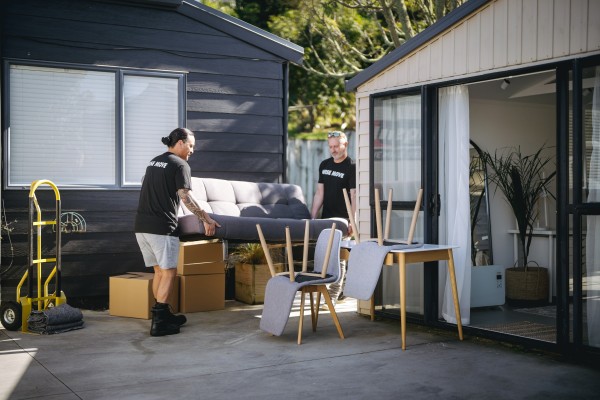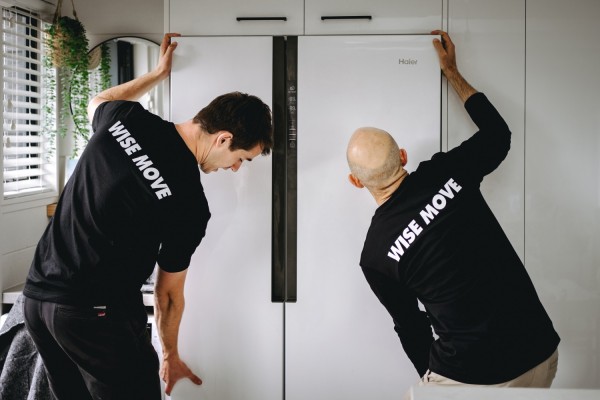Guide to moving with kids in New Zealand
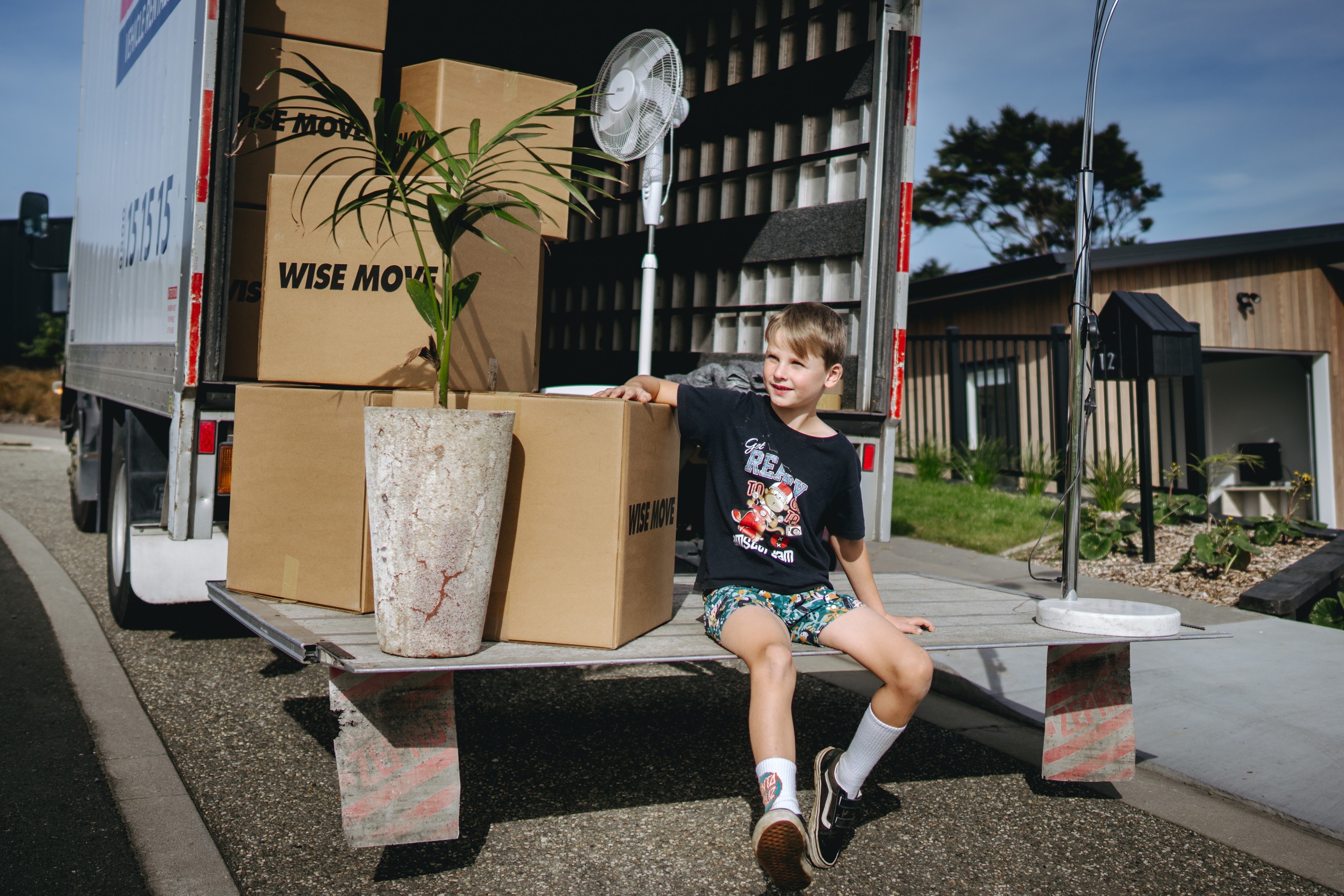
Moving house can be a stressful experience. There’s a lot to think about, from decluttering and packing to checking the weather in advance of the big day. Add kids into the equation, and there is even more to juggle. Fortunately, with a bit of planning, moving house with kids doesn’t have to be a source of worry. Our guide will walk you through the moving process when you’ve got kids in tow and make your big day run smoothly.
Why moving house is a big deal for kids
Moving can be a stressful experience for kids. Your home might be the only place they’ve ever lived. Saying goodbye to it means saying goodbye to a lot of familiar things. If you’re moving neighbourhoods or even cities, your kids may also be leaving behind their friends, their school and their favourite places to play. It’s a lot to consider.
According to Stats New Zealand, around 45% of New Zealand households move once every five years. That translates to around 380,000 households that move between cities, regions or suburbs. Studies have shown that multiple moves during childhood can have a negative impact on a child’s well-being or academic performance. If you’re preparing for a household move with kids, it's important to make them feel part of the process.
How to prepare your kids for a move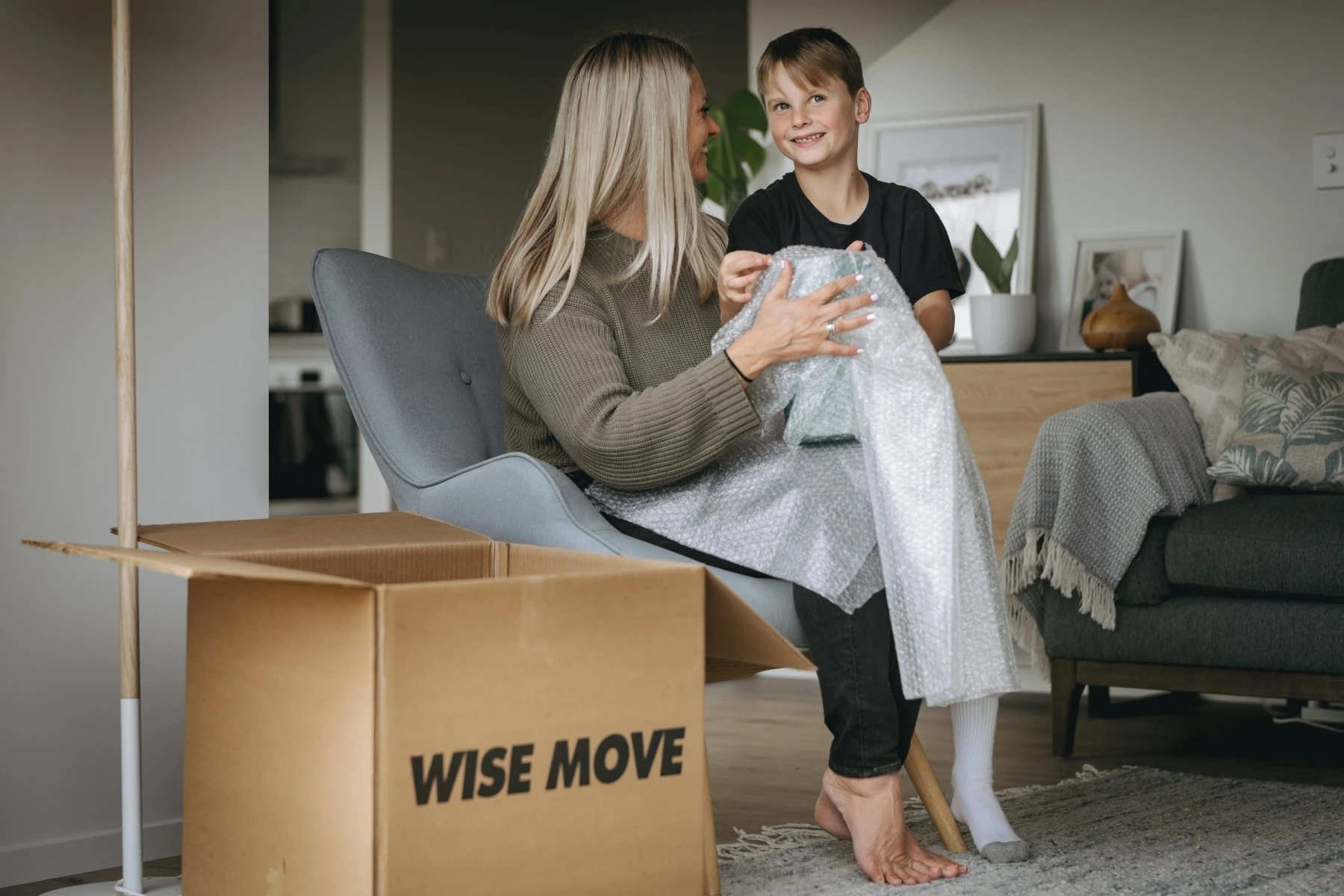
Preparing your child for a household move should start well before you start packing up your home. If they’ve never moved before, the process can seem quite daunting. Even if your children have moved before, they might be worried about having to make new friends or not seeing their grandparents as much, even if you’re only moving to a different suburb. A little reassurance about what they can expect can go a long way.
Start the conversation early
The earlier you can talk to your kids about where you’re moving, the better. This helps you reassure them early on and ensures that they don’t get confused. The amount of detail you share with them will depend on their age, but you should always be honest about what they can expect.
-
For toddlers and preschoolers: Keep it simple. The aim is for them to understand that you are moving and will no longer be living in the same house. Reading picture books about the moving experience can be a great way to help them understand it. Check out 'Moving Molly' or The Berenstain Bears’ Moving Day.
-
For older kids: Involve them in discussions about your move and let them ask questions. They may be angry or sad, but supporting their emotions and telling them early on will make things easier in the long run.
Stick to a routine
Until you move, try to keep their routine the same as it is any other week. Having to skip soccer practice or making changes to their schedule can add a level of chaos to their life that can make processing emotions even more difficult. Sticking to the same meal, naps, and after-school schedule will provide comfort even if your home is filled with moving boxes.
Give them some control
Moving can be stressful for kids as it can feel like the move is happening ‘to’ them. Involving them in a small choice can give them a feeling of control. This could include letting them choose which toys go in their bag on moving day. For slightly older kids, you could give them a job to be ‘in charge of.’ This could be as simple as taping up the tops of the boxes.
If they are old enough, you could get their input on how they want their new room to look. They might want to pick a new paint colour or go shopping for a new duvet cover. These little decisions that they get to make help them be in control, and can turn the anxiety of moving into excitement.
How to pack with kids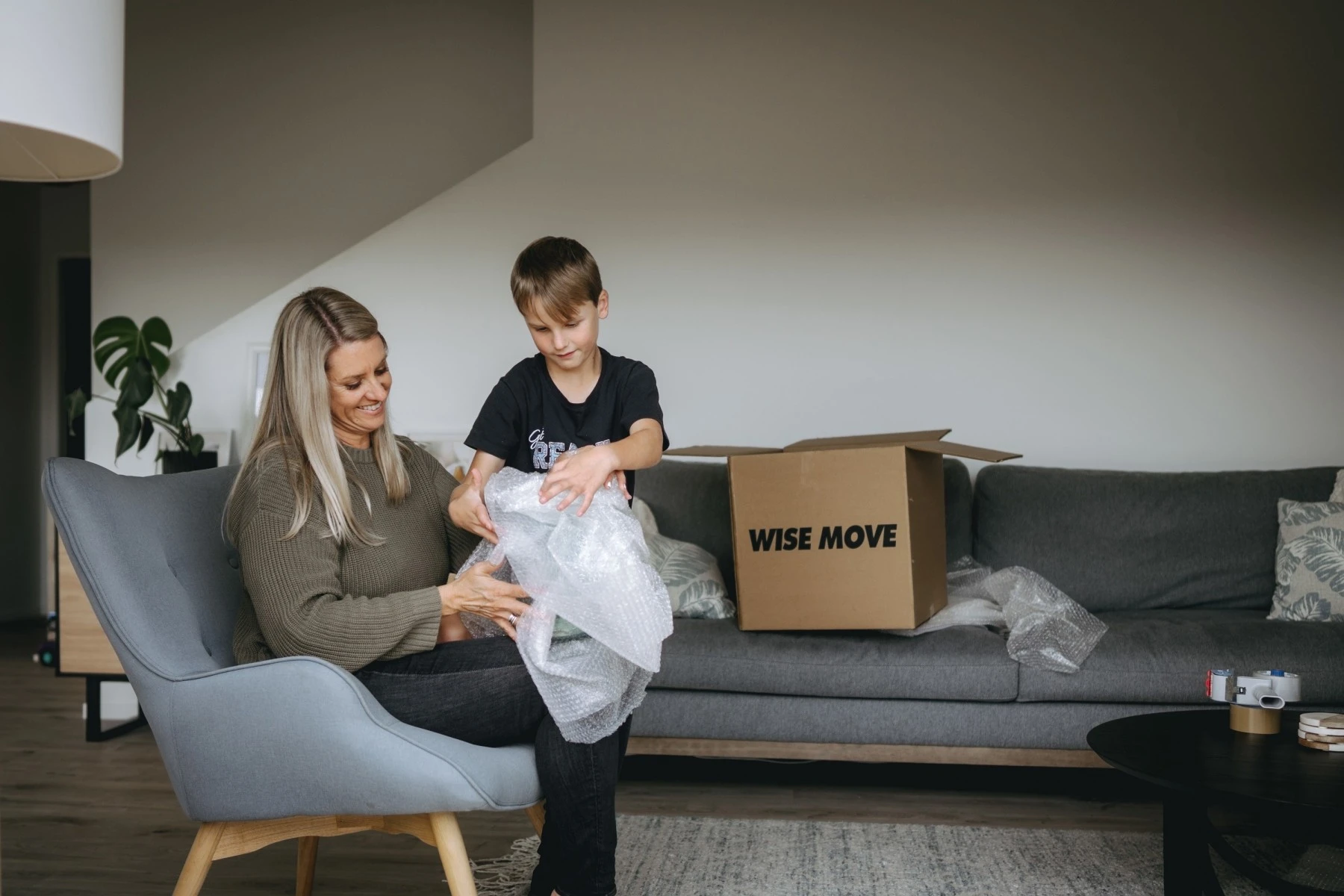
Packing up an entire house is a big task. Add kids to the mix, and it becomes a mission. Not only do you still have to keep on top of their daily routine, you’re also trying to pack away the things that make both your lives easier, like easy access to their toys or their favourite snacks.
The key to making your packing easier is to get kids involved. Yes, really. While it might sound like adding another problem into the mix, we promise it can actually help.
Get the kids involved in a declutter mission
Moving is the perfect opportunity to cut back on the clutter. This includes the avalanche of toys and outgrown clothes kids tend to collect. Rather than trying to sneak things out when they’re not looking (we know it’s tempting), turn it into a joint mission. Give your kids the chance to decide what they want to keep and what can be passed on to someone else..
Framing it as something generous, like giving their toys a new home just as you’re moving into one, can help ease any reluctance. Kids love to feel helpful, and this gives them a sense of ownership in the move. You could even let them choose the local op shop or charity to donate to, or take a family trip to drop things off together. There's less stuff for you to pack, and a great life lesson in the process—totally a win-win.
Pack the important stuff last, but unpack it first
There’s nothing worse than arriving at the new place, everyone exhausted and hungry, only to realise you have no idea where the toothbrushes are. Save yourself the stress by creating a ‘first night’ box for each child filled with the essentials like pyjamas, snacks, a favourite toy, clean clothes, books, and any must-have bedtime items.
Label the boxes clearly and, if they’re old enough, get your kids to help pack their own. It gives them something to look forward to and makes them feel part of the move. Keep these boxes in the car with you (not the moving truck), just in case there are any unexpected delays. You’ll be glad you did when bedtime rolls around and the unpacking is still in full swing.
Organise childcare early on
Moving day is full on, and you can make it a whole lot easier if you get someone to take care of your kids while you tackle the move. Whether it’s grandparents, a trusted family friend, your day centre or even a neighbour, scheduling some much-needed time away from the house means your children won’t be getting under your feet. What’s more, they have something to look forward to and keep them out of the chaos.
How to keep calm with kids on moving day
No one wakes up looking forward to moving day, but with a little preparation, you can ensure that everything runs smoothly. One thing to keep in mind is flexibility. If you have young children, something is likely to go wrong. Whether it’s a tantrum about something you didn’t anticipate or packing something you didn’t mean to (that helps them get over said tantrum), trying not to overschedule yourself on moving day means less to worry about when the unexpected inevitably happens.
Here’s how to make moving day run smoothly with kids in tow.
Create a kid-friendly game plan
Make sure our kids know what to expect. Having a game plan for the day that they can understand will help them stick to the plan. It could be as simple as waking up, having breakfast together, taking the dog to the playground and then coming home to greet the movers.
If they want to get involved, you can give them simple jobs:
-
Carrying the day bags to the car.
-
Checking for stray items in each room.
-
Packing up any toys they sleep with and putting them in their backpack.
These small tasks will keep them busy and might take care of a few things in the process.
Add in some fun
Small things can help lighten the mood, especially if everyone is stressed. Here are some ideas to help make light of the situation:
-
Put on a fun playlist.
-
Give them small missions and tasks to do—for example, get them to look after the measuring tape.
-
Add in some playful elements where you can, like doing a little dance in every room that’s packed up.
Try to find moments within the chaos that feel more like memories.
Meltdowns will happen, that’s life
Moving is stressful even for adults. Children will inevitably have a meltdown on moving day. What’s more, the meltdown isn’t likely about moving but about something else entirely. Frustration, tiredness or even annoyance can all result in a meltdown on moving day. Here are some things that can help:
-
Validate their feelings.
-
Take breaks for snacks or TV.
-
Stop for a cuddle.
-
Read their favourite book.
-
Go for a walk.
How to settle into your new home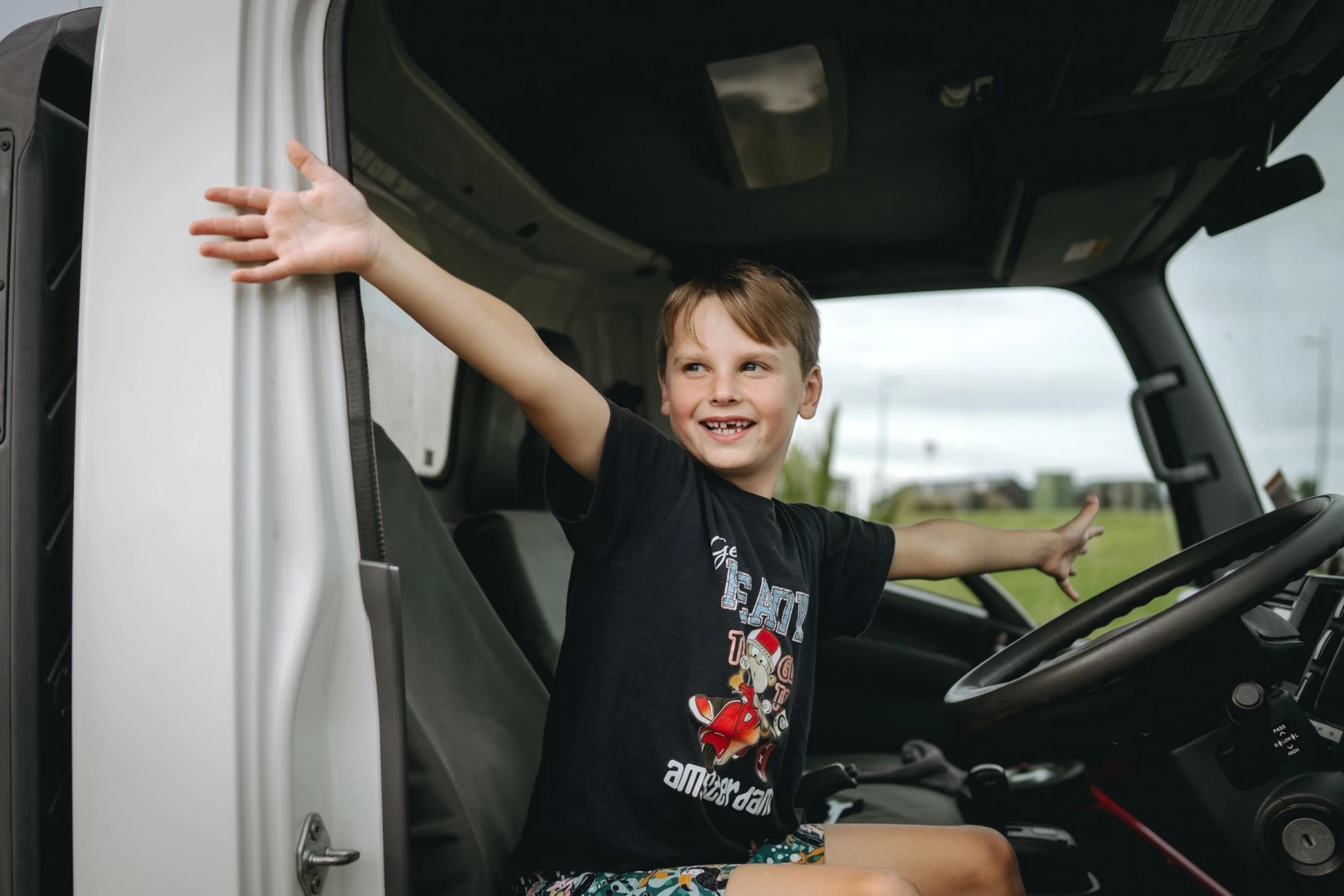
So, you’ve made it. The move is done, the keys are in hand, and you’ve officially survived the chaos of moving day. But for your kids, the transition is just beginning. Helping them settle into a new space doesn’t happen overnight. They may be facing a new school, unfamiliar surroundings or being far away from other family members.
One of the best things you can do is set up their room first. Even if the rest of the house is still box central, giving your child a space that feels familiar and comforting makes a huge difference. Unpack their favourite duvet, find their favourite teddy bear, plug in their night light, and read their favourite bedtime story. Small touches of the familiar can create a sense of safety and routine, even if you’re all still living out of suitcases for a few days.
Make the new neighbourhood feel like home
Once you’re in and have the essentials unpacked, start exploring your neighbourhood as a family. Helping your child feel connected to their new surroundings is a great way to ease any nerves, and it can be fun for you too. Head out on foot or scooter and check out the local parks, your new go-to café, or the best place for a weekend ice cream.
If there are big changes to their routine—for example, where they’re now going to school—take them for a visit. You can also visit friends who live nearby or other exciting places, like sports fields, playgrounds or libraries, to get them excited about their new neighbourhood. Building familiarity and creating new routines will help them feel grounded during this time.
Keep checking in
Emotions surrounding the move may arise later on, especially for school-age kids or teenagers. While the move might have gone well, once the initial excitement wears off, the reality of being the new kid at school or missing their old room can creep in. You can help their journey by checking in with them on their own.
Ask lots of questions and don’t be afraid of them feeling upset about the move. Take them for ice cream or talk to them about the move when they’re away from their siblings or other family members. Open, regular communication can help them process what is a fairly big life change. Validating how they are feeling is a great way to make your child feel heard.
Helpful resources for parents
-
Parenting Place: Articles, resources and helpful advice on raising children.
-
Plunket New Zealand: Support and advice for parents with young children.
Take the stress off your move with professional movers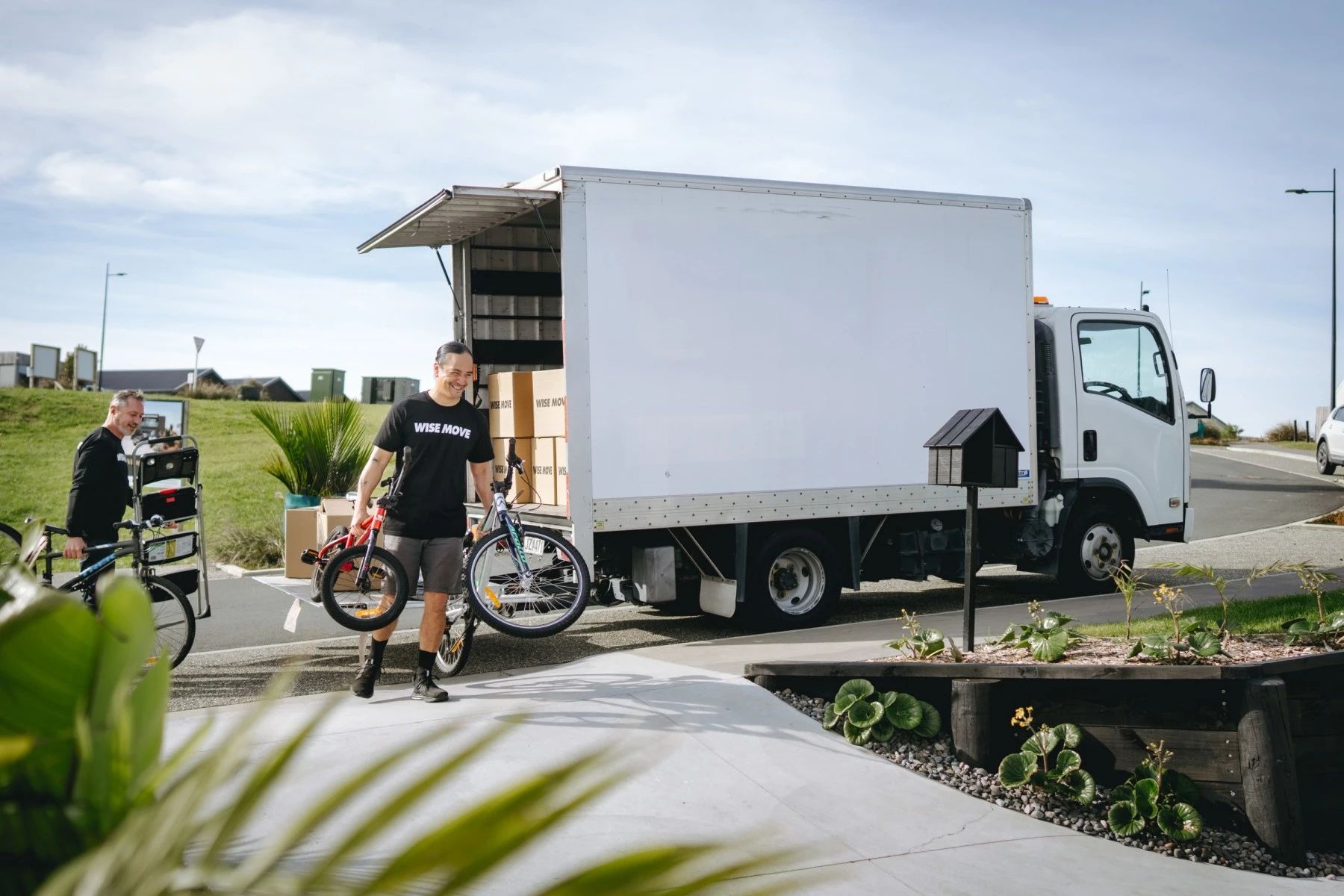
Shifting house with kids can test even the calmest of nerves. But it’s also a chance to grow together, build resilience, and create some pretty special memories along the way (even if they involve a meltdown on moving day). With a bit of planning, plenty of patience, and a few well-timed snacks tucked in your pocket, you’re more prepared than you think.
Hiring professional movers can make a massive difference to your stress levels—and your sanity—on moving day. With Wise Move, you can quickly compare quotes from trusted moving companies across New Zealand, all in one place. The platform lets you read verified customer reviews, view company ratings, check credentials, and see insurance details, so you can make a confident, informed decision and book trusted and vetted moving companies, whether you're moving your family down the street or across the country.
What do our customers say?





For every (wise)move
